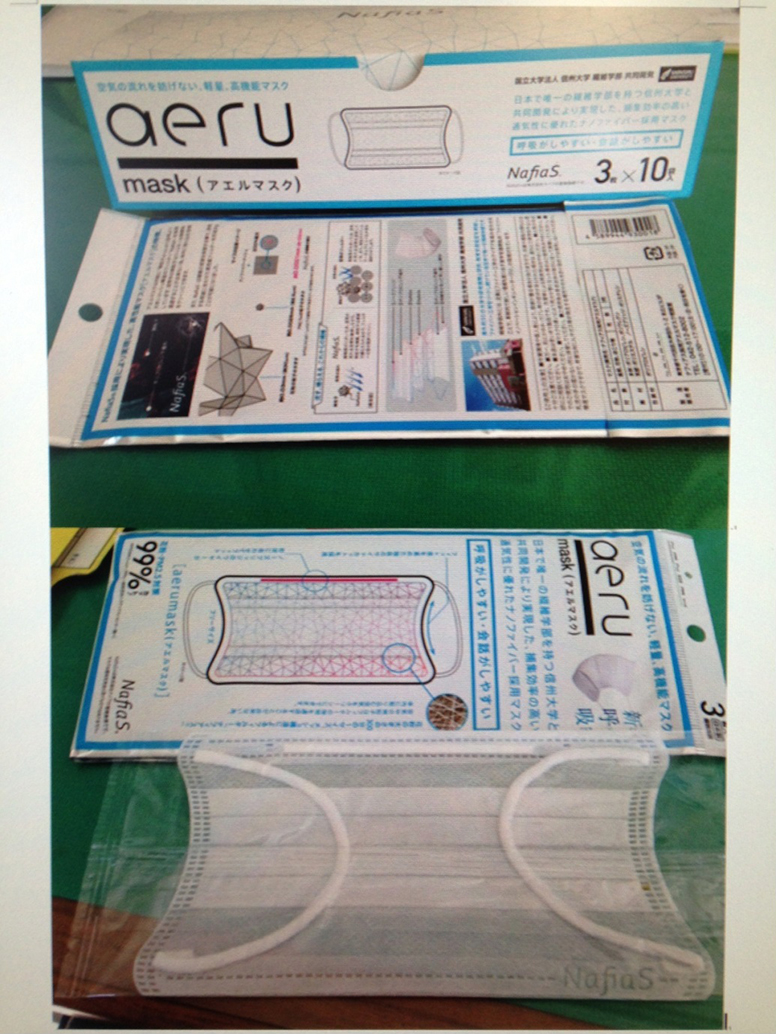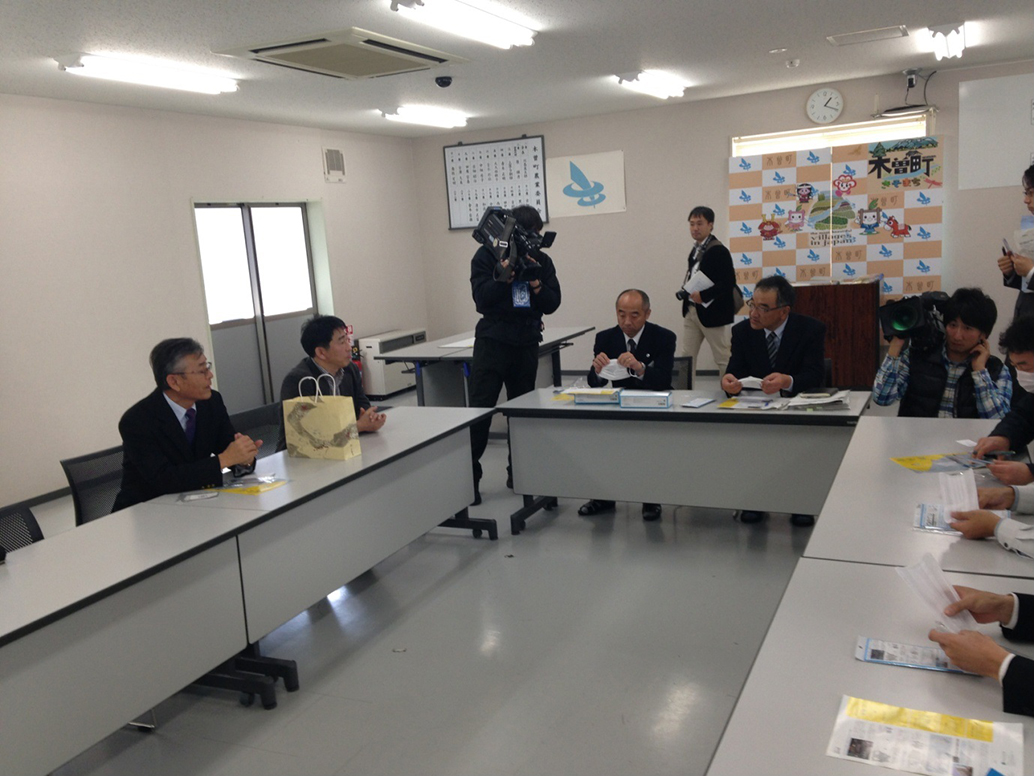In recent years, concern has been increasing regarding measures against radioactive substances and PM2.5, new infectious viruses, etc. In particular there has been increasing interest in high performance masks for these ultra-fine particles. However, when high collection efficiency is to be achieved with existing filters, the filter becomes thick, and its air permeability is also poor. Therefore it is difficult to breath, and they are not suitable for long term use.
It has been previously reported by researchers throughout the world that ultrafine nanofibers are effective as a filter material that achieves both high collection efficiency and excellent air permeability. When the fiber diameter is at the nano-level, filters are produced with predominantly fine pore size, and in addition a “slip flow effect” is achieved in which air flows smoothly over the surface of the fibers, so there are special nanotechnology effects such as low air resistance, etc. However, because of the barriers of production, processing, and cost, to date their use has been limited to industrial filters in special fields.
In December 2010, the Nano-Fusion Technology Research Group of the Institute for Fiber Engineering, Shinshu University succeeded in developing the world’s first technology for mass production of nanofibers. This technology has been applied to high performance masks that can be more easily used by normal consumers.These nanofiber masks have a collection efficiency of 20% or more while maintaining high air permeability. In addition, the weight of the filter portion is reduced by a factor of about 100, so a reduction in the weight of the mask as a whole of about 40% has been achieved.
It has been previously reported by researchers throughout the world that ultrafine nanofibers are effective as a filter material that achieves both high collection efficiency and excellent air permeability. When the fiber diameter is at the nano-level, filters are produced with predominantly fine pore size, and in addition a “slip flow effect” is achieved in which air flows smoothly over the surface of the fibers, so there are special nanotechnology effects such as low air resistance, etc. However, because of the barriers of production, processing, and cost, to date their use has been limited to industrial filters in special fields.
In December 2010, the Nano-Fusion Technology Research Group of the Institute for Fiber Engineering, Shinshu University succeeded in developing the world’s first technology for mass production of nanofibers. This technology has been applied to high performance masks that can be more easily used by normal consumers.These nanofiber masks have a collection efficiency of 20% or more while maintaining high air permeability. In addition, the weight of the filter portion is reduced by a factor of about 100, so a reduction in the weight of the mask as a whole of about 40% has been achieved.



